The Saiga Day was established in 2010 as part of the SOS Saiga project. The first Saiga Day was held in Jaslyk and has since been celebrated annually across Uzbekistan. In 2024, besides Karakalpakstan, the event was held for the first time in Tashkent region at the Chatkal Biosphere Reserve. The national significance of this day was recognized when it was institutionalized by Presidential Decree No. PP-171 on May 31, 2023, and further reinforced by the declaration of 2024 as the “Year of the Saiga” by the head of the Republic of Karakalpakstan.
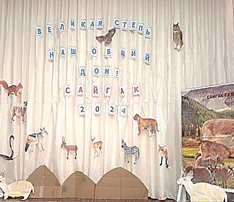
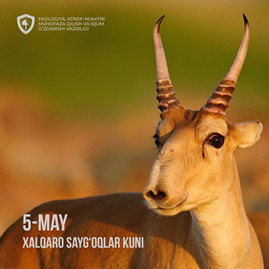
This decree is recognition of saiga day across the country coupled with the news that 2024 has been named the year of the saiga rewards the dedication and hard work of our colleagues in Uzbekistan.
The environmental education programme, Saiga Day, brings young people across Kazakhstan, Uzbekistan, Mongolia and Russia together with the aim of raising awareness of saiga conservation. Using field trips, ranger meet and greets, Art, music, dance, sport presentations and debate to celebrate Saiga This experience allows the younger generation to better understand saiga and the steppe, the importance of conserving biodiversity and their role in this process.
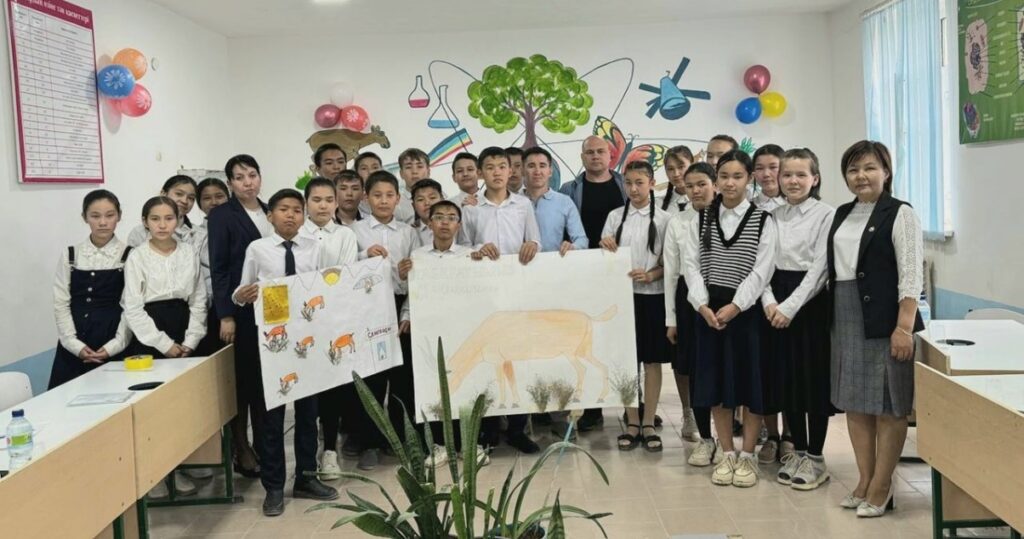
Saiga Day 2024 was celebrated in Ustyurt (Uzbekistan) between May 3-6, with more than 1,250 students, 720 teachers, 420 parents and other community members from more than 12 schools in 7 towns of Karakalpakstan taking part. This year these celebrations are a partnership between the Institute of Zoology Saiga Conservation Alliance, Ecomaktab, Uz-Kor Gas Chemical LLC JV and the Saigachiy Integrated reserve and occurred in Nukus, Jaslyk, Karakalpakiya, Beleuli, Kyrkyz, Elabad and Muynak.
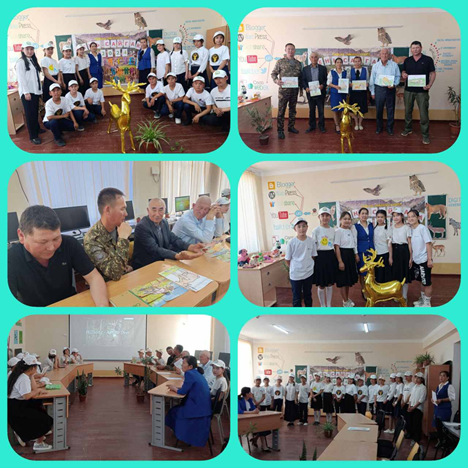
Saiga day is a shining example of how education and entertainment can be combined to engage young people on important environmental issues and instil in them a love and respect for nature.
G. Tanabergenova, a teacher from School No. 4 in Muynak, who participated in these events, noted: “These lessons help our students see the real contribution they can make to the conservation of our natural resources”.
In part one of this two part series we take a close look at activities in Nukus, Jaslyk and Karakalpakia.
Saiga Day at School No. 46 in Nukus: Celebrating the Great Steppe and Biodiversity
School No. 46 in Nukus prioritises environmental education, actively involving students in biodiversity protection and sustainable development. On May 3-4, 2024, the school celebrated Saiga Day under the motto “The Great Steppe is our common home,” combining education and engagement.
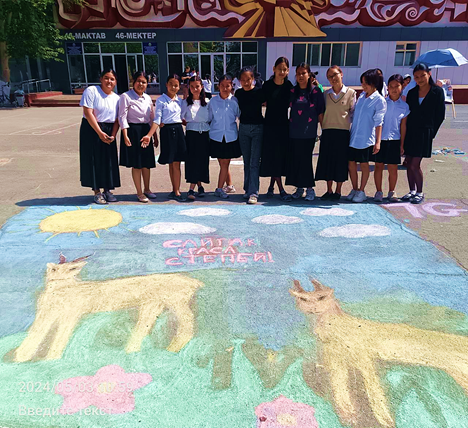
Highlights of Saiga Day in Nukus:
- Interactive Lessons: Teachers conducted engaging lessons about the Great Steppe, using presentations and discussions to highlight its beauty and the importance of biodiversity.
- Drawing Competition: 7th graders participated in an asphalt drawing competition, creatively depicting saigas, symbolising their hopes for conservation.
- Sports Competitions: Volleyball and futsal matches promoted physical fitness, team spirit, and environmental culture among students.
- Grand Opening and Closing: The eco-club presented a saiga anthem, accompanied by inspiring speeches and a theatrical performance on nature conservation. The event concluded with awards and a concert, leaving a lasting impact on participants.
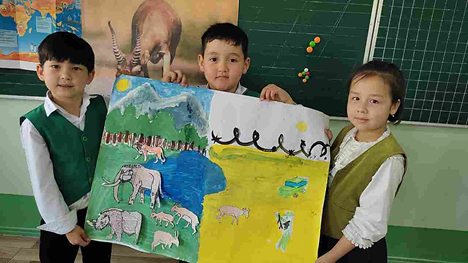
Saiga Day successfully raised environmental awareness and fostered a sense of responsibility for the Great Steppe, demonstrating the powerful combination of education and entertainment in promoting environmental stewardship.
Saiga Day 2024 in Jaslyk: Celebrating Environmental Awareness and Tradition
The tradition of celebrating Saiga Day in the villages of Jaslyk and Karakalpakiya began 14 years ago, initiated by the Institute of Zoology of Uzbekistan to combat the declining saiga population and local poaching. The event is now a major environmental education effort supported by school No. 54, local teachers, and environmental clubs like “Akboken,” led by dedicated educators.
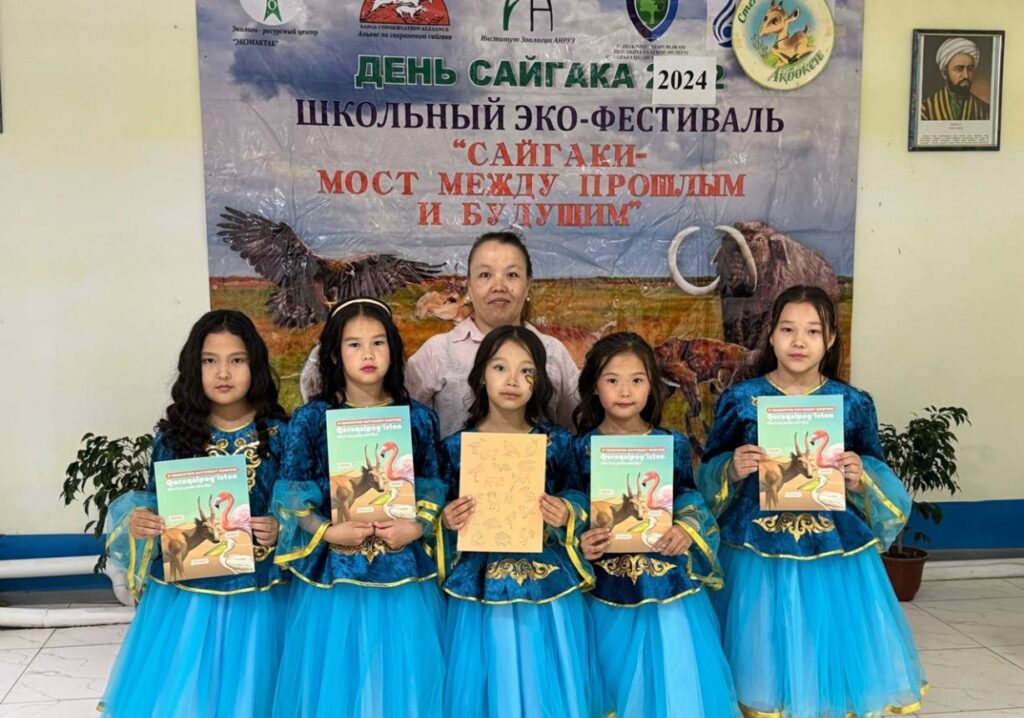
Key Highlights:
- Collaboration: The event involves collaboration with NGOs, the Saiga Conservation Alliance, and the Institute of Zoology, emphasising ecological knowledge and conservation.
- Preparation: Extensive preparation involves teachers, village elders, and methodologists, focusing on ecology and the steppe’s flora and fauna.
- Sports and Education: The day started with a sports relay, symbolising saiga migration. Teachers held interactive lessons under the theme “The Great Steppe is our common home,” involving research and creative tasks.
- Cultural Performances: The celebration included dance, music, and an eco-theater performance by students, highlighting the life of steppe animals, with the saiga as the central, heroic figure.
Despite rainy weather, the event saw over 300 students and 100 adults participating, fostering environmental awareness and community spirit.
Saiga Day 2024 in Karakalpakiya: A Village Celebration of Nature and Community
Karakalpakiya, near the Saigachy reserve, holds a special place in celebrating Saiga Day, with significant involvement from schools No. 26 and No. 56, known for their dedicated teachers and active students. The village eagerly anticipates and prepares for this event, ensuring extensive participation.
Key Highlights:
- Educational Lessons: Both schools conducted open lessons on “The Great Steppe is our common home.” Notable lessons included those by Rejeporva Yulduz and Makarashova Rais.
- Cultural Performances: The festivities concluded with awards and a vibrant concert featuring national music, dances, a saiga anthem, and a school environmental theatre performance. The mini-play depicted animals finding refuge in the Saigachy reserve, emphasising themes of kindness and protection.
- Sports Competitions: School No. 26 hosted a 3-kilometer cycling marathon for girls and a running marathon for boys. School No. 56 organized a fun relay race for 7th graders, focusing on skills like accuracy and strength.
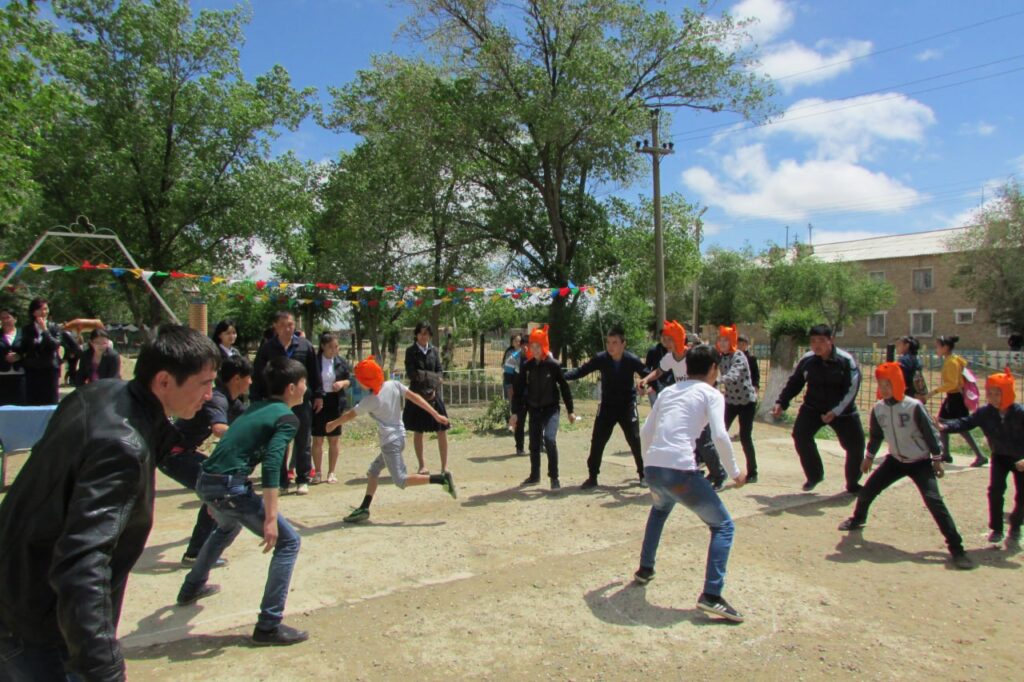
The celebration engaged about 500 village residents, including over 300 children and 200 adults, leaving a lasting impact on the community and reinforcing the values of environmental stewardship and unity.
